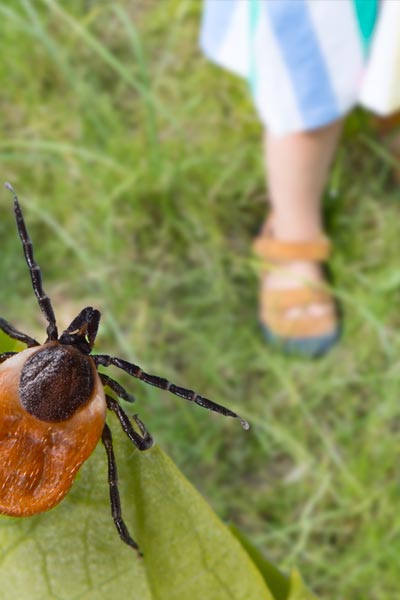
About LymeRIC
Significance
Lyme disease is a tick-borne infection caused by Borrelia burgdorferi in the U.S. Current estimates suggest that nearly 500,000 people in the U.S. are diagnosed and treated with Lyme disease each year with a peak in incidence in children five to 14 years old. Some patients who complete recommended antimicrobial therapy for Lyme disease continue to have symptoms (e.g. fatigue, arthralgia, myalgia, neurocognitive symptoms such as brain-fog) after appropriate antimicrobial treatment.
Estimates of the frequency of persistent symptoms vary considerably depending on clinical setting, patient population, and outcome measured. However, most of these studies were conducted in adults with Lyme disease, and many of them did not include a control group to compare with the prevalence of these symptoms in the general population. The first study of persistent symptoms following treatment of Lyme Disease in children was recently published. In this single-center retrospective cohort, 402 children with Lyme disease diagnosed up to ten years before study initiation were sent a symptom survey. Of the one-quarter who completed this survey, a mean of two years after Lyme disease diagnosis, one in five children had at least one symptom six months after diagnosis; most of the reported symptoms were mild, without substantial functional impact. As the first prospective longitudinal multi-center pediatric Lyme disease cohort, our study will be significant by following children with Lyme disease from a variety of emergency department and primary care settings from diagnosis to determine time course of symptom resolution.

Innovation
Most of the studies of Lyme disease symptom burden do not include controls, although healthy patients may also experience similar symptoms. A recent study conducted in the Netherlands compared symptoms for adults with confirmed Lyme disease (n=1,135), a tick bite without developing Lyme disease (n=1,887) and general population (n=1,942) using monthly online surveys. Overall, those with Lyme disease had higher prevalence of persistent symptoms at 6 months than tick and general population controls; although control patients also had a substantial symptom burden. Our proposal is innovative by including children with Lyme disease as well as clinical mimics and healthy controls, affording the opportunity to compare frequency of symptoms between groups.
Standardized outcome measures for patients with post-treatment Lyme disease syndrome (PTLDs) are lacking and published studies have not used standardized measures. To address this gap, the General Symptom questionnaire (GSQ-30) was developed to capture patient-reported symptom burden. The novel GSQ-30 has been significantly associated with validated scores for depression, anxiety, fatigue, functional impairment and general health and differed between disease groups. However, the GSQ-30 score has not been broadly validated or applied in children. Our proposal is innovative by pilot testing the feasibility, modifying this score for use in children and testing the psychometric properties.

Impact
Lyme disease, especially when symptoms persist, can have a significant impact on the lives of affected individuals. Substantial efforts are underway to develop effective methods to prevent Lyme disease through vaccination as well as pre and post exposure prophylaxis. A recombinant OspA Lyme disease vaccine was licensed for people 15 to 70 years of age, but it was removed from the market in 2002 by the manufacturer because of poor sales amid concerns of side effects. A new OspA Lyme vaccine is currently in Phase 3 trials in both children and adults with results expected in the coming years. Better defining the long-term impact of Lyme disease in children will frame the importance of disease prevention efforts.
Our study is significant because we will establish the time course of symptom resolution for children with Lyme disease. Our study is innovative because it will be the first comprehensive prospective study of persistent symptoms in children with Lyme disease compared to clinical mimics and healthy children. The impact of this study will be to frame the importance of Lyme disease prevention efforts for children.